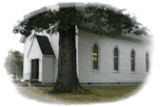Parker's Battery
Bermuda Hundred Campaign in Chesterfield County, VA
Parker's Battery
In the first two weeks along the Howlett Line, Parker's Battery was involved in frequent duels with nearby Federal batteries. The guns were also active in support of skirmishes that took place as picket lines were advanced in the summer of 1864. Parkers Battery occupied this site until the fall of Petersburg on April 2, 1865, when they joined Lee on his retreat to Appomattox. After the war, members of the company purchased this property and held reunions here. In the 1930's, as the last members of the company began to pass on, the land was donated to the National Park Service. Living history events are frequently held at the park in the Spring and Fall. Parker's Battery is part of the Richmond National Battlefield. The site features a walking trailwith several interpretive signs. There is a historical marker at the park.
Parker's Battery -the "boy soldiers" was named for C.S.A. Major William Watts Parker. Doctor William Parker survived the war and is buried in Hollywood Cemetery, Richmond, VA. He recruited many of the battery's soldiers from the families of his Richmond, VA patients. They distinguished themselves at Gettysburg and elsewhere, but it was the youth of the battery's gunners, loaders and spongers (some as young as fifteen) that made their fame. "Parkers Batterty"was named for the artillery company that defended this spot. The "Howlett Line", a series of infantry trenches, ran from the James River south to the Appomattox River. The trenches were supported by the placement of artillery positions like Parker's Battery at intervals along the line. The site was manned by Parkers "Boy Company" comprised of men from the City of Richmond.
Major William Watts Parker, C.S. A.
Bermuda Hundred Campaign
Doctor William Watts Parker was a Civil War Confederate Army Officer. Having graduated from Richmond Medical College in 1848, he was a physician associated with Bellevue Hospital in Richmond at the start of the Civil War. Enlisting in the Confederate Army in 1861, he became Captain of his own battery, the Parker Virginia Battery, in 1862. His battery saw action at Sharpsburg, Chickamauga, and Knoxville, and was with Lee when he surrendered at Appomattox. Promoted to Major before the end of the war, his services as a surgeon were also used throughout the war. Returning to his medical practice following the war, he also served as president of several Richmond charitible institutions. He died on August 3, 1899 and is buried in Hollywood Cemetery in Richmond, VA.
Chesterfield County's Military History
Parker's Battery Park is located at 1801 Ware Bottom Spring Rd, Chesterfield, VA Richmond National Battlefield Park. Chesterfield County contains 11 parks sites associated with the Civil War. Each of these sites has its own unique story to tell. Collectively, these “links in a chain” tell the larger story of one of the most important military campaigns of the war but seldom told.
Parkers Battery is a well-preserved example of the Confederate defenses known as the Howlett Line. The site was manned by Parker’s “Boy Company” comprised of men from the City of Richmond. Infantry trenches ran from the James River south to the Appomattox River, supported by artillery positions along the line. Parker’s Battery was involved in frequent duels with Federal positions were located less than one mile east. Confederate forces occupied this site until the fall of Petersburg,

